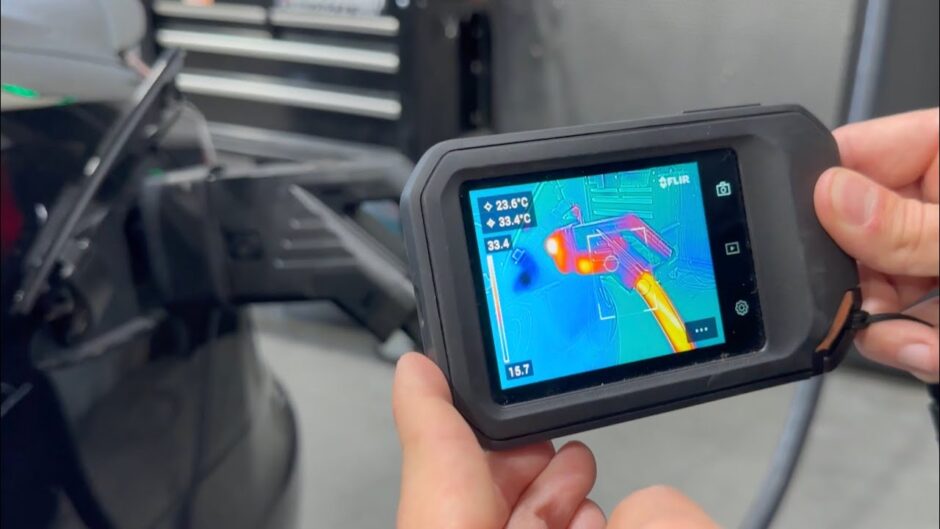TWICE!
Thank you Atlis Energy Solutions for sponsoring today’s video! If you would like to learn more about their vertically integrated EV technology ecosystem visit:
http://bit.ly/AMVenergy
We would really appreciate it if you subscribe to our channel! The more subscribers we have, the more awesome opportunities we will be able to bring to you!
Find all of our Amazon must-haves here:
https://www.amazon.com/shop/influencer-3317696d
Kyle on Twitter: @itskyleconner
Kyle on Instagram: @Virtualkyle
For more behind the scenes content:
Twitter: @Out_of_Spec
Facebook: https://www.facebook.com/outofspecreviews
Instagram: @OutofSpecReviews
Inquiries: info@outofspecstudios.com
If you liked this video, we recommend checking out some of our other channels!
Out of Spec Motoring: http://youtube.com/outofspecmotoring
Out of Spec Reviews: https://www.youtube.com/outofspecreviews



The CCS adapter does have an internal thermal cutout. I took apart the European version : https://youtu.be/d-R49NdernY
Love it. Suggestion for Atlis and you, try a charging trailer/pickup load that a service company could take to out of ‘gas’ EVs to get a quick 30 mile charge, 50KW or less but at higher charge rates (not high for Atlis, but say 150kw/hr rate or so). Great for service trucks or highway service crews. Oh yes, it should be able to charge from ‘shore power’ or a EV charging station. Ok, I’m dreaming I know.
Now you have to try the same in an Arizona summer and see how the cable does 🤣 Seriously though, I’m guessing that’s where you’ll start to see the max ratings come into play.
I think this really shows that there is a lot of potential “optimization” that can be done with the current charging equipment. The 350A rating is probably worst case, such as charging in 120ºF conditions. If you’re charging when it’s 20ºF, maybe it’s okay to do 450A with it for example? I think the cables should come with a derating curve that gets programed into the charger to provide faster rates when cold, rather than setting single fixed limits. Tesla is really good at the optimization stuff based on temperature, so you can always get the fastest rate possible, I would like to see that strategy used more widely in the industry to improve charge speeds above spec rather than just below spec.
Such an awesome video, love this kind of wild testing
I’m surprised Tesla allows (in software) their adapter to pass more current then it’s rated for. Maybe they monitor the temperature and just limit current if it gets warm?
Damn, there goes Kyle’s warranty.
At what point does overrapid charging start to significantly degrade the battery? Is a full charge in zero minutes really worth the reduction in cycle/performance lifetime of the battery.
Interesting to watch. Also got giddy recognising PCworx running on the laptop. I have a Phoenix Contact DC charge controller on my desk for support here in the UK.
This is a “Formula One Racing” type of experiment. I wouldn’t want to be a user at a charger that had been over rated for a week and the connector contacts were rather scorched and the plastic just a little bit melty. Overload fast charging works but whether the cable and connector would stay in good condition for many cycles, I doubt.
Kyle, you should really throw out that CCS adapter based on how bad the pins look. I’m surprised it made it without melting your charge port. You should take it apart and see what’s inside, that would be a really cool video. Or send it to an engineering YouTuber.
This is awesome content! Love it!
Your guy mentioned a very important point, KW vs Amp. I think we shouldn’t rate chargers by KW instead it should be AMPs. It’s gets more complicated if you have a care which charges fast by a long time.
Going large on Saturday night! Great. Thanks.
Take a look at the Electrical Arc Flash Demonstration video on YouTube. I was kind of worried how close you were to an overloaded electrical system.
ALWAYS FULL SEND IT
What is the point of a thermal camera when we can’t see the end temperature. Lol
disappointed you didnt do the 1.2MW through it into the water
I’m watching thinking you sure you wanna do this inside ? Lol
Due to EU and China norms if the car detects 90C at the charge port the car has to stop charging. Therefore the car will limit earlier to prevent to hit this temp. The weakest point ist not the cable, most of the time it’s the connector